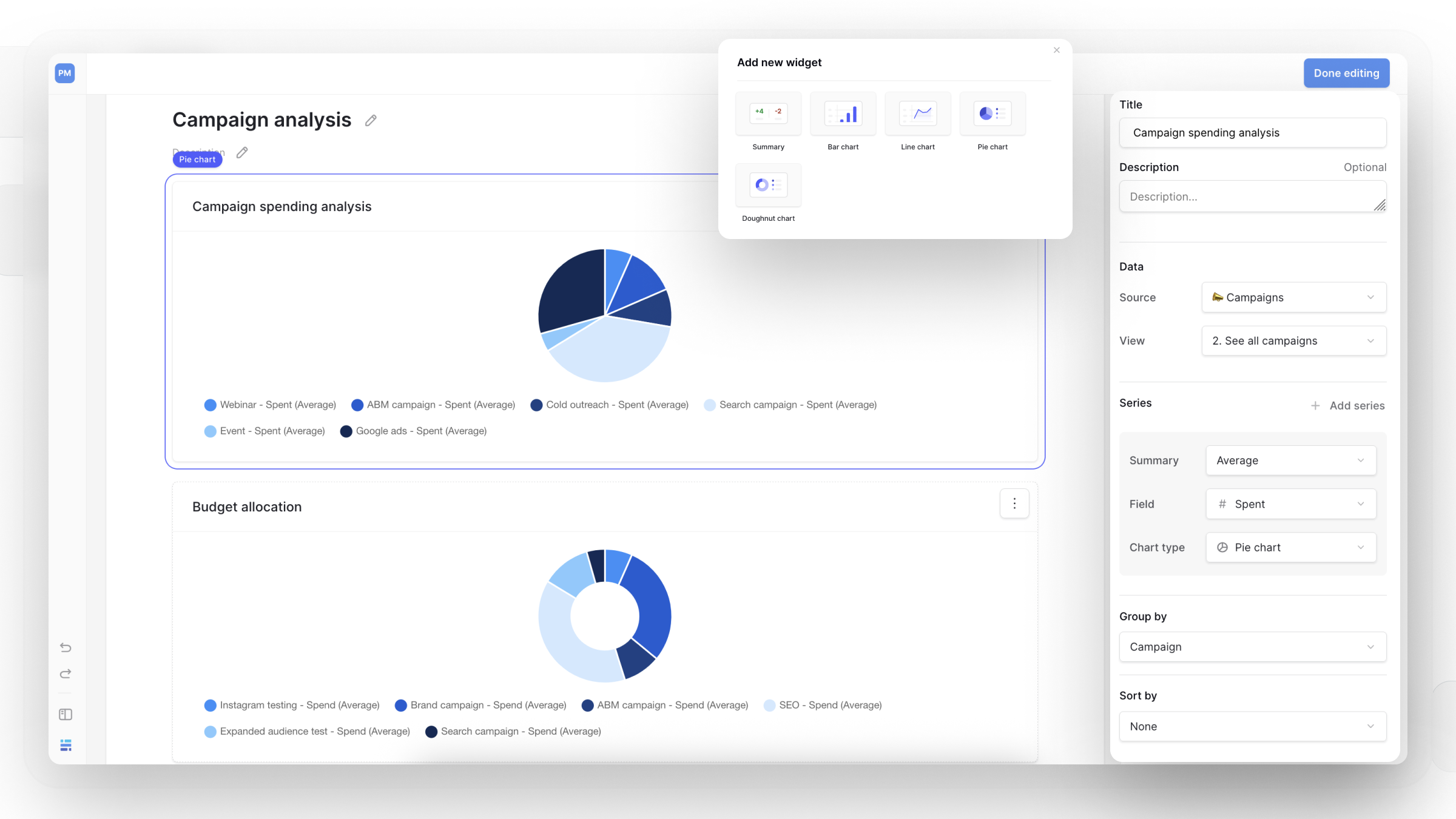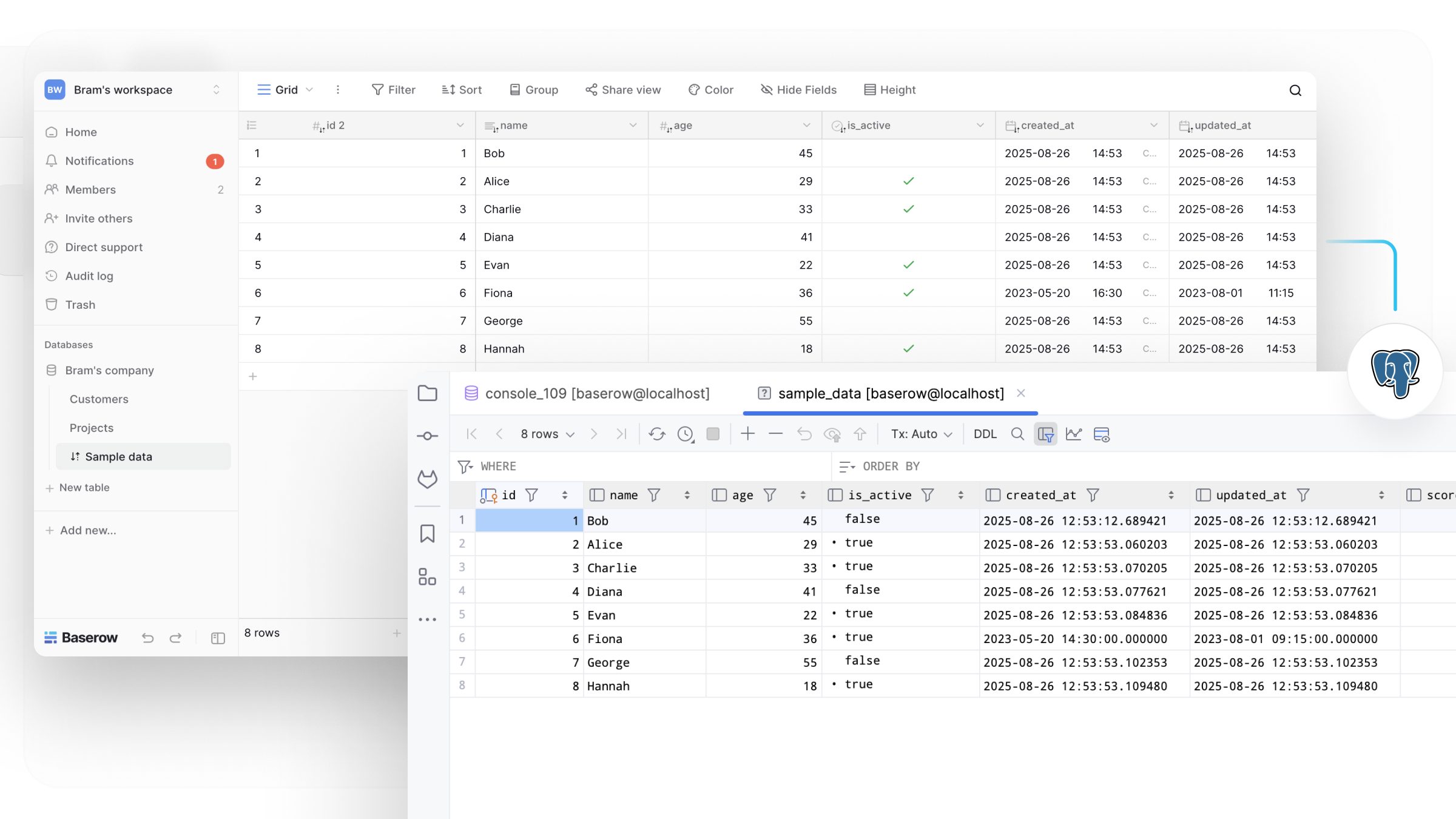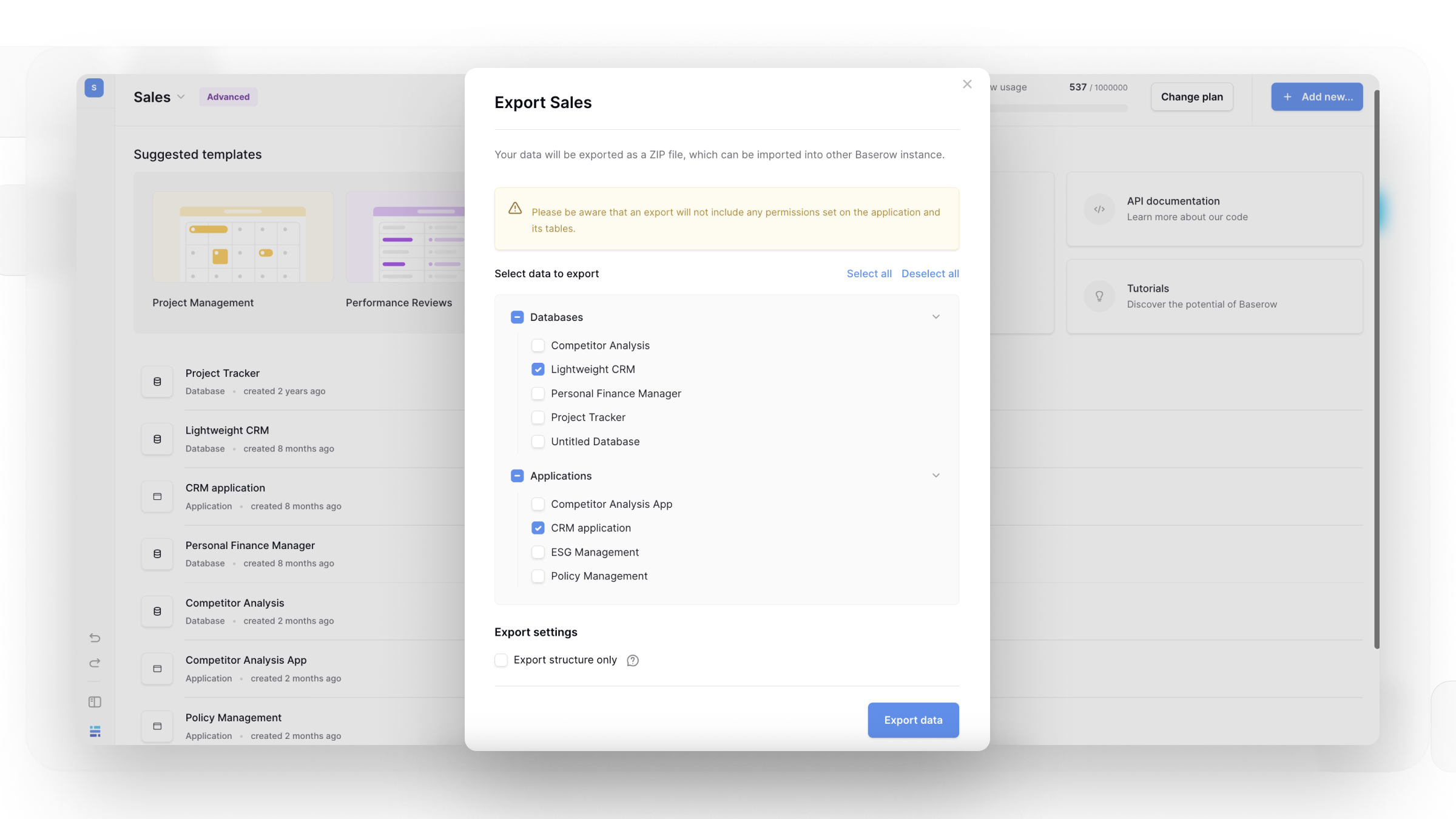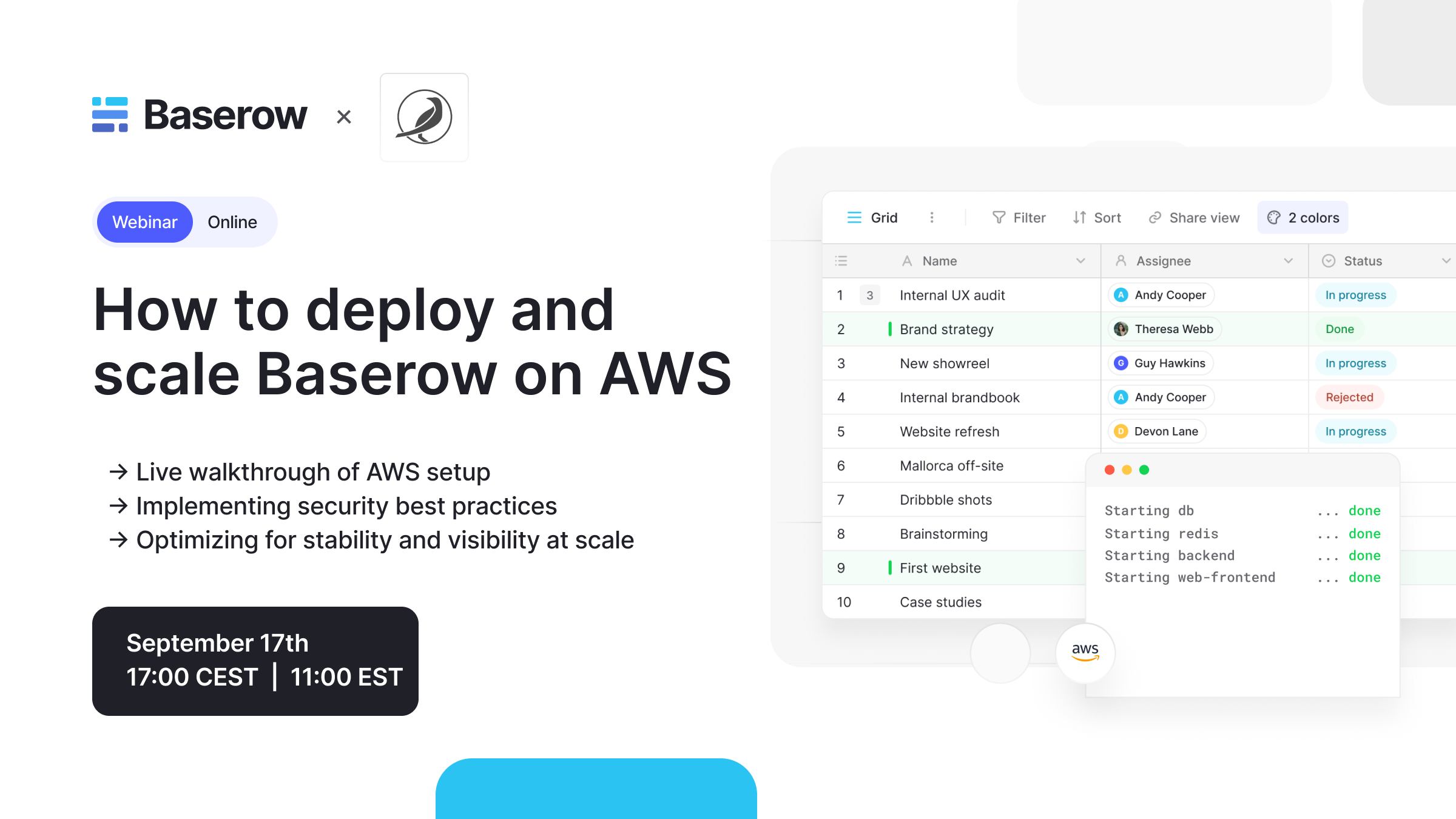
Our latest release, Baserow 1.35, brings powerful new features to help you visualize your data, keep it in sync with PostgreSQL, and manage workspaces more efficiently.
Here’s what’s included:
Pie and doughnut charts for Dashboards

You can now add pie and doughnut charts to your dashboards for richer data visualization. These new chart types make it easier to see proportions, distributions, and comparisons at a glance, whether you’re tracking budgets, survey responses, or project resources.
To add a pie or doughnut chart:
- Go to your Dashboard and click Add new widget.
- Select Pie or Doughnut as your chart type.
- Choose the data source and configure the display options.
Two-way data sync with PostgreSQL

We’ve added two-way sync with PostgreSQL, extending Baserow’s data sync feature to keep information consistent between Baserow and your PostgreSQL databases.
With this update, you can:
- Sync changes from PostgreSQL into Baserow to keep your workspaces up to date.
- Push updates made in Baserow in real-time back to PostgreSQL.
After connecting your PostgreSQL database and selecting the fields you want to sync:
- Toggle the Two-way sync option.
- This allows you to edit cell values directly in Baserow and push the updates back into your PostgreSQL database.
- Note: changes are send to PostgreSQL in real-time. They are pulled when the (periodic) sync runs.
- Click Create and sync table to finish setup.
⚠️ Important: We recommend creating backups of your PostgreSQL database before enabling two-way sync to avoid accidental changes.
This makes Baserow even more powerful for teams already using PostgreSQL, ensuring data consistency across platforms.
Allow application selection during workspace export

Exporting workspaces is now more flexible. You can choose which applications to include in a workspace export, instead of having to export everything at once.
This makes it easier to back up or share only the relevant parts of a workspace, saving time and storage space.
Enhancements for field value constraints
We’ve expanded and optimized field value constraints introduced in 1.34.
What’s new:
- Support for
unique_with_emptynow extends to more field types, including duration, email, phone, URL, date, and single select. - Constraints now correctly handle default field values, ensuring rules are enforced even when defaults are applied.
These enhancements give you even greater control over data quality and consistency.
Formula system improvements & bug fixes
We’ve delivered two fixes to make formulas behave correctly in edge cases you reported:
-
count()on linked rows with NULLs: Fixed an issue wherecount(field('Link'))could return0if the linked table’s rows hadNULLvalues in their fields. It now returns the actual number of related records. -
Outdated formula values: Fixed an issue where a formula depending on another formula in the same table could show outdated values. Formulas now recalculate in the correct order to give accurate results.
These updates make the formula system smoother and easier to use in your workflows.
Company news
🚀 Deploy & Scale Baserow on AWS

If you want more control, scalability, and security, self-hosting Baserow on your own infrastructure is the way to go.
In this live session, our partners at BlackBird will walk you through deploying Baserow on AWS, including:
→ Scaling infrastructure for performance and growth
→ Using AWS RDS Aurora and S3 to overcome hosting limits
→ Implementing disaster recovery and security best practices
Bram Wiepjes, Baserow’s founder and CEO, will also share hands-on tips for:
→ Debugging and monitoring your instance
→ Integrating with tools like Sentry and Posthog
→ Optimizing for stability and visibility at scale
📅 When: September 17 at 5 PM CEST / 11 AM EDT
👉 Register here to join the session
What’s next
The next big features on our roadmap include:
- Date dependencies
- View/row-level permissions
- AI assistant
- Search in entire workspace
- Automations
As always, if you have questions or feedback, drop by our official community forum. We’d love to hear from you!

Baserow 2.0 introduces the automations builder, upgraded AI fields, the Kuma AI assistant, enhanced workflow logic with formulas and variables, improved workspace search, and stronger security with 2FA.

Discover how Airtable and Baserow compare in features, flexibility, speed, and scalability. Compare pricing plans and hidden costs to make an informed decision!

Explore the best open-source software alternatives to proprietary products. Discover OSS tools, licenses, and use cases with our updated directory.